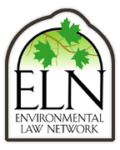
How often have you seen state-level solution proposed for, or imposed upon, a localized water issue?
How successful have those solutions been, when compared to those developed locally?
If you are a state agency employee or stakeholder that worked to develop those solutions, what if a local forum, with strong stakeholder involvement, had already been in place to assist in those efforts?
A new state program may hold the answer for facilitating local involvement in developing solutions for both local and statewide water issues. In 2020, the Utah Legislature passed the Watershed Councils Act to develop “diverse and balanced stakeholder forums for discussion of water policy and resources issues” at the local watershed and state levels. The Act allows for creation of twelve basin-level local watershed councils, which feed into a state-level council. The state-level Utah Watersheds Council, which meets quarterly, includes representation from DNR, DEQ, UDAF, and other state agencies and institutions, as well as appointees representing municipal and county governments, special districts, reclamation projects, agriculture interests, environmental interests, and business and industry interests. Each basin-level local council may also appoint a representative to the state council. In this manner, local watersheds can make their needs and concerns known on the state level, while the state agencies can better coordinate with each other, tailor their programs to local needs, and help inform the Governor and Legislature of those needs.
Implementation of the Watershed Councils Act was delayed by the pandemic, so no basin-level local councils have been created to date. However, the Division of Water Resources hopes to facilitate the creation of two local councils this year. The local councils develop their own organizing documents and policies for “open and equitable” governance by the full spectrum of watershed stakeholders that reside, work, or own the right to divert or use water in the watershed. As local councils are created, the state-level council will certify each council as meeting these organizational and operational criteria.
Watershed councils “are not vested with regulatory, infrastructure financing, or enforcement powers or responsibilities.” Without such an investiture, why should local stakeholders participate? How will this not complicate or replace existing efforts in each watershed, or become “just another meeting?” The purpose of the Watershed Councils Act is not to replace or complicate existing efforts, but rather to facilitate and augment those efforts by improving coordination and communication, both on the local level and between local stakeholders and state agencies that are tasked with developing and implementing local projects and plans. For instance, a state agency seeking local feedback and involvement on a project or plan can engage an established local watershed council, rather than attempting to create such a group from scratch any time such a need arises. With perpetual population and economic growth increasing stresses and demands on drought-depleted water resources, the need for forums that facilitate local engagement to develop watershed-scale solutions for pressing water issues is greater than ever. If you would like more information on the efforts to develop a local council in your watershed, click here or contact Dan Adams at 801-520-4762 or dadams@langdongroupinc.com.
